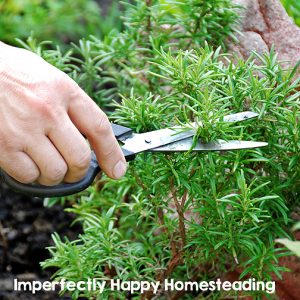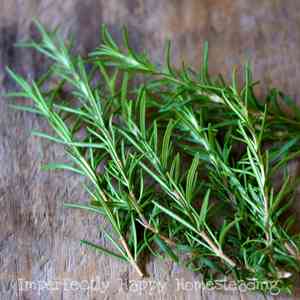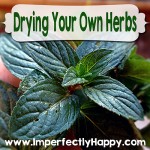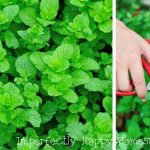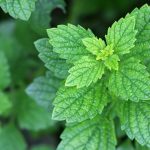Growing rosemary, this wonderfully aromatic herb is vital in many kitchens. It has long narrow leaves, and colorful flowers. In the right conditions it can be a very hearty herb to grow. Some even grow them into hedges. They make beautiful additions to landscaping, while also adding a beautiful aroma to the air.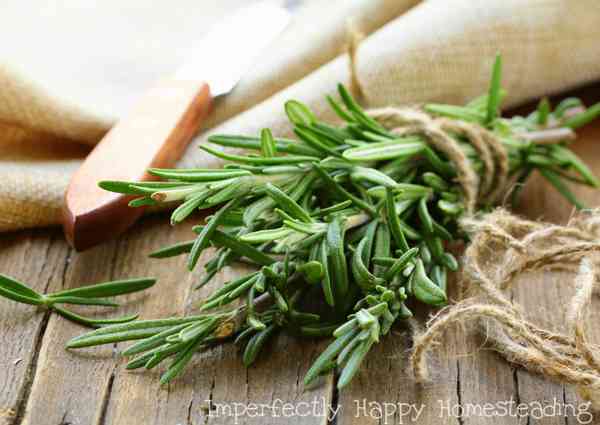
Tips For Growing Rosemary
-
- *Starting from seed is a slow process. Buying plants, instead is a great way to start out.*
-
- Buy bigger plants rather than buying the small 1 or 2 inches. Rosemary is a slow grower, especially in the
 first year. In early spring, stores will be selling the larger rosemary plants. They usually sell out pretty quickly, so make sure to grab as many as you need or want. They usually run about $15-$20.
first year. In early spring, stores will be selling the larger rosemary plants. They usually sell out pretty quickly, so make sure to grab as many as you need or want. They usually run about $15-$20.
- Buy bigger plants rather than buying the small 1 or 2 inches. Rosemary is a slow grower, especially in the
-
- *Soil should be well draining*, and have a pH of 5 to 8.
-
- Water only when the soil is dry. Over watering can create root rot.
-
- During the spring and summer is the best time to harvest. Don’t harvest too much before winter begins. This will give the plant time to recuperate after the harvest.
-
- *The pretty blue, pink, or purple flowers are *edible* and are great in a salad!
- Air circulation is very important for rosemary. Poor air circulation could cause powdery mildew.
Be sure to see Growing Basil
Everything You Need to Know About Growing Rosemary
Rosemary will have different needs depending on where you live. We’ll go over that, plus possible diseases, insects, how to harvest, and more!
In Hot Climates
If you live in a hot climate, Rosemary will need to be placed in an area with partial shade. It can’t take the full strength of the sun all day in a hot climate. I placed mine in a fairly shady area on the porch and it’s thriving.
In Cold Climates
Since rosemary doesn’t love temperatures that are below 30ºF or so, keeping them in pots is the best way to grow them in a colder climate. Rosemary will love being in the full sun during the spring and summer. Bring the plants indoors, several weeks before the first frost. They will enjoy a good potting soil that is well draining. Air circulation is also important for this plant, especially while being grown indoors. Keep a fan on, to keep the air moving.
How to Harvest Rosemary 
The best time of year to harvest is during spring and fall. Don’t harvest too closely to the first frost. This will give the plant time to recuperate after the harvest. Also, only cut soft stems, if the stem is woody don’t make cuts there. Soft stems will have the ability to grow anew, while the woody stems will not.
There are a couple of ways to harvest rosemary.
-
- Take the first 2 or 3 inches from a stem for a more sustainable approach. You can do this every couple days. It will actually promote a more bushy plant. Make sure to allow time for new growth between cutting the same stem.
- Or if you have a large bushy rosemary plant, you can take a few stems, during the spring time. Try to pick them from different areas of the plant so not to devastate one area. Give them time to grow back before harvesting again.
*Fertilizer
*Rosemary rarely needs fertilizer.* Too much nitrogen may invite pests.
Propagate 
Cut a few stems (4-5 inches long) from the plant, make sure to only cut soft stems, not the woody stems. Remove the lower leaves. Put them in a couple inches of water, in a glass. When roots start growing, place them in a pot with well draining potting soil. Care for this new plant as you would the others, except wait to harvest until the plants have doubled or more in size.
*Diseases
*Rosemary is resistant to many diseases however, it can get powdery mildew.* Keeping the plant pruned, providing good air circulation will help to decrease this from happening.
Insects
Rosemary is not prone to having many issues with insects. There are a couple of things to watch for though. Such as, spider mites, scales, and/or mealy bugs.
Spider mites, yellowing of leaves, evidence of spider-like insect. They usually live on the underside of the leaf. You may notice a web like substance on the plant also. Remove infected areas as possible. Then Apply neem oil as directed on the bottle.
Scales, they look like little bumps, and come in a couple different colors. The leaves may yellow. Scales can be found mostly on stems, but sometimes on leaves also. If only a small amount of scales are found, you may be able to scrape them off. If larger infestation is present. cut off the infested areas.
Mealy Bugs, White powdery-like bugs that have a lot of legs. You will find them grouped together around the stems, and leaves. Spray with water, an insecticidal soap, or pyrethrin soap.
Preserving Rosemary
Air Drying – If you are preserving whole stems, tie the stems with twine. Punch holes in a brown paper bag and cover the stems. The bag will catch any leaves that fall off on their own.
Hang them to dry for 1-2 weeks. Before storing them crush one between your fingers. Make sure it crumples, if it doesn’t it may need more time to dry. If you store them before they are done drying, they will be prone to molding.
Dehydrating – My favorite way to preserve rosemary. I have an excalibur dehydrator. Place small sprigs of rosemary on the dehydrator tray. Set the temperature to the correct setting according to the directions of the machine. I usually dry them for 4-6 hours.
Remove the leaves from the stems I love this especially for rosemary & thyme) and place them in an airtight container and place away from light.
Want to learn more about gardening? Take the very affordable Beginner’s Guide to Vegetable Gardening Online Class!
There are several kinds of rosemary to choose from. The best way to choose one that is good for your area, is to check what your local stores are selling. They usually sell plants that are native and/or will thrive in your current environment.
I wish you the best of luck on growing rosemary. I hope these tips helped you!

Kristi from Homestead Wishing
- HomesteadWishing.com
- Facebook.com/homesteadwishing
- Twitter.com/homesteadwish
- Pinterest.com/homesteadwish
Kristi Wheeler Bio:
Her family thinks she is the world’s best cook. She currently has too many hobbies to list. Her favorite is crocheting. She also loves gardening, caring for chickens, making homemade items, and escaping to new worlds through books. Kristi is also a writer for Fermentools, and for the Beauty Lifestyle Mommy Magazine.
Check out – Homesteadwishing.com
Resources:
*edible *Fertilizer *Diseases https://aggie-horticulture.tamu.edu/vegetable/files/2010/10/E-623-Easty-Gardening-Rosemary.pdf
*Starting seed *Well draining soil
https://gardeningsolutions.ifas.ufl.edu/plants/edibles/vegetables/rosemary.html
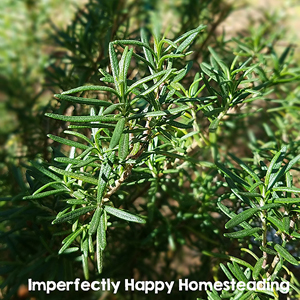 first year. In early spring, stores will be selling the larger rosemary plants. They usually sell out pretty quickly, so make sure to grab as many as you need or want. They usually run about $15-$20.
first year. In early spring, stores will be selling the larger rosemary plants. They usually sell out pretty quickly, so make sure to grab as many as you need or want. They usually run about $15-$20.